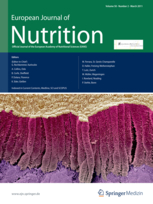Whole milk consumption and cardiovascular disease and mortality: Isfahan Cohort Study
Authors
Affiliations
- 1Saw Swee Hock School of Public Health, National University of Singapore, 12 Science Drive 2, MD1 #11-01A, Singapore, 117549, Singapore. mohammad.talaei@u.nus.edu.
- 2Isfahan Cardiovascular Research Center, Cardiovascular Research Institute, Isfahan University of Medical Sciences, Isfahan, Iran. mohammad.talaei@u.nus.edu.
- 3Isfahan Cardiovascular Research Center, Cardiovascular Research Institute, Isfahan University of Medical Sciences, Isfahan, Iran.
- 4Saw Swee Hock School of Public Health, National University of Singapore, 12 Science Drive 2, MD1 #11-01A, Singapore, 117549, Singapore.
- 5Department of Nutrition, Harvard T.H. Chan School of Public Health, Boston, MA, USA.
- 6Cardiac Rehabilitation Research Center, Cardiovascular Research Institute, Isfahan University of Medical Sciences, Isfahan, Iran.
- 7Department of Neurology, Tehran University of Medical Sciences, Tehran, Iran.
- 8Alzheimer’s Disease Center, Rush University Medical Center, Chicago, USA.
- 9School of Population and Public Health, University of British Columbia, Vancouver, Canada.
Abstract
Background: The association between milk intake and cardiovascular disease (CVD) and mortality risk is still controversial but data from Middle-Eastern populations are scarce. We aimed to study these associations in an Iranian population.
Methods: We used the Isfahan Cohort Study, a population-based prospective study of 6504 adult Iranians. In this analysis, we included 5432 participants free of CVD at baseline with at least one follow-up. Data on whole milk intake and other dietary factors were collected by a food frequency questionnaire at baseline. Cox proportional hazard regression was used to predict risk of CVD events, comprising coronary heart disease (CHD) and stroke, and mortality according to frequency of whole milk intake with adjustment for other potential confounders.
Results: During a median 10.9 years of follow-up, we documented 705 new cases of CVD comprising 564 CHD and 141 stroke cases. Compared with non-consumers, less than daily intake of whole milk was significantly associated with lower risk of CVD (HR 0.80, 95% CI 0.65-0.97), CHD (HR 0.81, 95% CI 0.65-0.99), and a non-significant lower risk of stroke (HR 0.79, 95% CI 0.50-1.27). Daily intake of whole milk was not significantly associated with CVD (HR 1.25, 95% CI 0.89-1.75), CHD, and stroke, but was associated with higher risk of all-cause mortality (HR 1.54, 95% CI 1.04-2.29).
Conclusions: Less than daily intake of whole milk was associated with a statistically significant, although modest, lower risk of CVD compared with non-consumption, but this potential benefit may not extend to daily intake in this population.
Keywords: Cardiovascular disease; Coronary heart disease; Iran; Mortality; Prospective; Stroke; Whole

